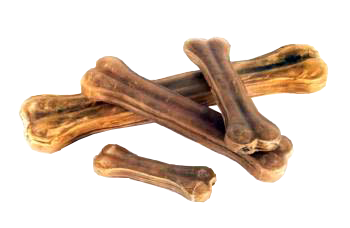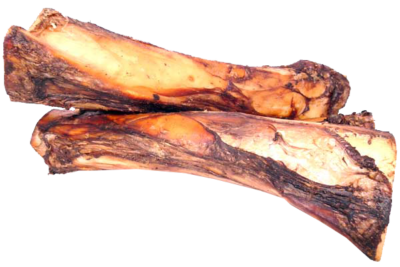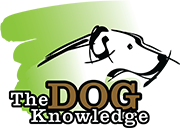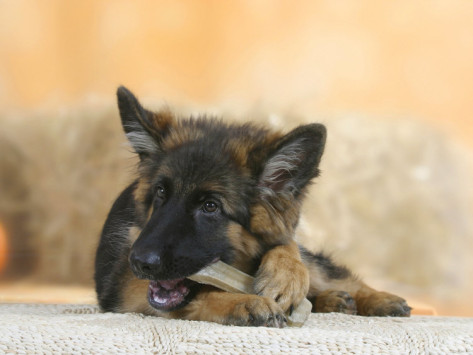What if I told you that some of your dog’s most onerous behaviors could be corrected by simply “throwing your dog a bone?”
That’s right, THROW YOUR DOG A BONE.
Understanding Your Dog’s Need to Chew, and how Chewing can Resolve Unwanted Behaviors
As one of four senior dog trainers and behaviorists at The Dog Knowledge, Charlotte’s only People/Pup training and social club, I specialize in service and therapy dog training as well as dog assessments. In other words, when I am not training a service dog, much of my week is spent sitting down with Charlotte families and their dog to help them understand what’s really going on in that canine mind. I see everything from dogs that simply need obedience training to dogs with serious behavioral issues such as aggression and a wide range of compulsive and destructive behaviors. And while all issues can’t be resolved in our 1+ hour sessions, there are some basic things that I repeatedly tell people that are simple things they can do at home to improve their dog’s behavior. One of those simple things is to meet your dog’s inherent need to chew.
One of my first questions that I ask a family as I am reading through their written dog behavioral evaluation is:
“Do you supply your dog with appropriate, varied and interesting things to satiate his desire to chew as well as providing needed teeth cleaning?”
The answer is almost always the same. “Oh yes, my dog has a basket full of toys that he has access to all of the time.” Sometimes, they mention that they provide a hard rubber toy such as a Kong stuffed with peanut butter for their dog to enjoy in his crate. But normally once their puppy is through the teething stage, very little thought, if any is given to his chewing needs.
You can search the web and you will find hundreds of articles about things we humans can do to relieve stress. Everything from taking a leisurely evening walk, working in the garden to running a marathon or working out at the gym. A dog’s need to chew goes back since the beginning. In nature, a dog’s life depended on having strong jaws and clean healthy teeth. A dog pack might typically Live out the winter with an elk carcus chewing each day on the meat and frozen bones. One of the reasons that a dog is able to eat bacteria ridden meat that would make any human ill, is that their digestive systems are very different from ours. They actually bury bones to encourage the growth of bacteria and dig them up later for a bacteria fest. Yuck!
So, like that comforting, homey, secure feeling we have when we think of the family gathering at grandma’s house for a Thanksgiving Feast, a dog pack gathered around their den, each dog leisurely chewing a bone for hours at a time, promotes that same sense of calmness. Chewing helps pacify a dog’s habits such as excessive self-licking, scratching and other nervous behaviors. Chewing can calm a dog with separation anxiety, thunder phobia, etc. And best of all, if you provide your dog with appropriate and varied chewing options, he is far less likely to take his anxiety out on a piece of furniture.
THE DOG KNOWLEDGE – OUR FAVE FOUR
If you asked one of our dog trainers at The Dog Knowledge,“As a professional dog trainer and dog behaviorist, what kind of bones would you give your working dogs for health and to relieve stress?” While there are breed specifics, in general our dog trainers unanimously agree on the following:
- First, a soft rope toy. They are available in different styles, for chewing, tugging, and throwing.
- Second, a firm rubber toy. These are great for jaw exercise, as they only give a little to jaw pressure. They are virtually indestructible, and come in a number of shapes and sizes, including balls, rings, and kongs. I also recommend stuffing your kong with peanut butter or simply take a fork and mash up a few leftovers from dinner to stuff the kong. Freeze the kong overnight to give your dog an extra challenge.
- Thirdly, I give my dogs a Compressed Rawhide Bone a couple of times a week. Compressed rawhide is different to the chemically bleached, retriever rolls which can unroll, become slimy and actually choke your dog.
- And finally, as both dog trainers and dog owners, the most important part of our dog’s diet is to provide them with the right kind of BONES. I personally speak for each of our canine trainers at The Dog Knowledge that we can’t stress this enough. You can give your dog fresh, smoked or boiled. Bones are one of the very few chew treats that can actually scrape tartar from the teeth. Nothing satisfies a dog’s desire to chew like a bone that can be chewed, gnawed, even held with the feet so that the end can be savored. Satisfying your puppy’s instinctive desire to chew with an appropriate object like a bone helps develop good habits, right from the start.

WHAT TYPES OF BONES ARE BEST SUITED FOR MY DOG?
There are couple key considerations in choosing bones for your dog. First, you must choose a size big enough that your dog must gnaw on it, rather than just chewing it up. Gnawing is the action that can scrape tartar from teeth. If in doubt, get a bigger bone than you think you will need. Marrow bones, which are long tubes or bone ends, typically called knuckles, are suitable for most dogs. Bones from beef, buffalo, and lamb are in my opinion best suited for chewing.
Note: Brachiocephalic breeds such as boxers, bull dogs, pugs, and shitzu are NOT mechanically designed to be able to chew bones effectively and safely.
Whatever type of bone you choose, the first chewing session can be a bit messy. Many people let their dogs “break in” the bone in their crates, outdoors, on the deck, or on a blanket. Since at any given time we have 20+ training dogs in our dog training facility who are attending one of our 3, 4 or 6 week board (stay) and train training packages, we typically will give a training dog a bone at the end of his training day while he rests on his elevated Placebed. This is a way to reward a dog through positive reinforcement dog training for a job well done. By teaching a dog enrolled in one of our dog training packages to remain on his Placebed anytime he is enjoying a fresh bone, any messiness can easily be rinsed off. Smoked and boiled bones are usually well cleaned in the first chewing session, and will last some time. If you have chosen a big enough bone for your dog, it should not splinter or crack.
WHAT KINDS OF BONES SHOULD BE AVOIDED?
Avoid the “3 B’s”: Baked, Broiled, Barbecued. I don’t recommend feeding any baked, broiled, or barbecued bones to pets because the heat dries up the bone and makes it more brittle and subject to splintering. Cooked chicken bones and beef “T” bones are mostly the culprits. Keep pets away from these bones! However, boiling the bone can be useful. If your dog isn’t used to chewing on bones it is best to soften the bone through boiling. Also boiled bones are great for puppies to get them accustomed to chewing on bones.

THE REAL SCOOP ON WHAT TREATS REALLY BENEFIT YOUR DOG’S TEETH
In sharp contrast to the commercial “chew treat,” a real bone contains only a bit of meat and perhaps some bone marrow, depending on how it is prepared. Real bones also can help clean teeth naturally, unlike products made from grains, sweeteners, fillers and chemically processed ingredients. Chewing helps stimulate saliva enzymes and when given AFTER meals for 10 or 15 minutes helps remove trapped food particles from the teeth. Chewing on bones also help prevent plaque buildup and gum disease especially in the back upper molars. Bones provide minerals and other nutrients (depending upon what kind of bone) and help satiate your dog’s desire for food. Bones provide the nutrients needed to keep the skeletal system fed regenerating and adapting. If you are unsure of examples of different bones feel free to stop by The Dog Knowledge, located off Wendover Road in Charlotte, NC. We sell and keep a variety of bones and other chewing options for our personal working dogs and will be happy to show you what we, as professional dog trainers recommend. We also can offer you assistance as to where you can purchase bones and other great chewing options.



